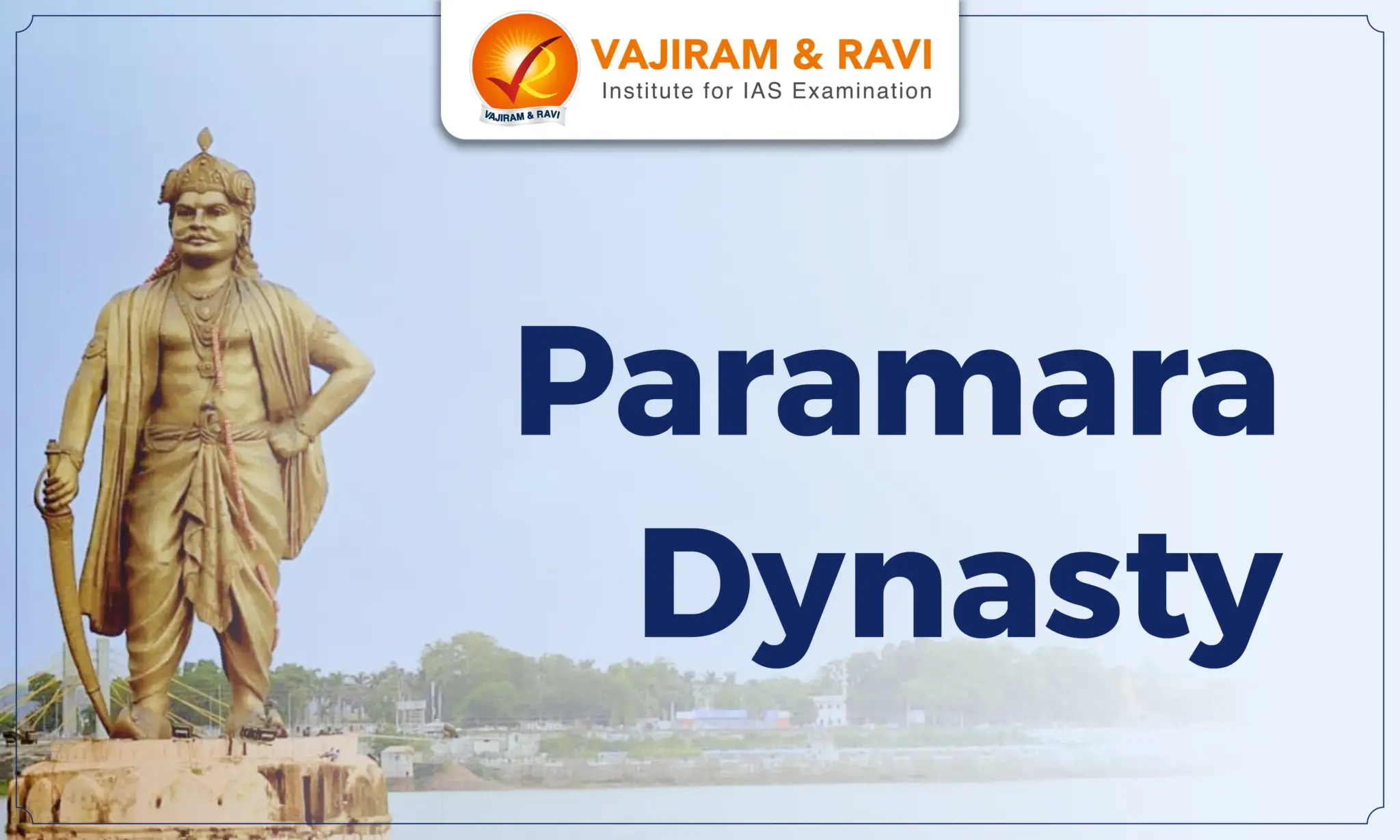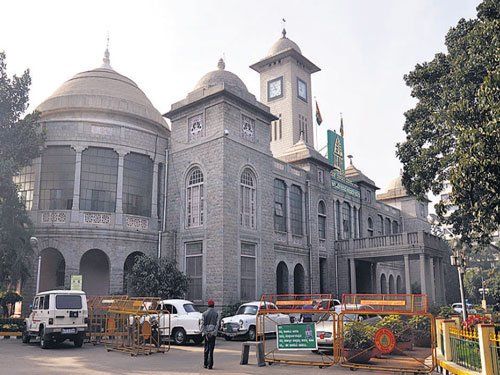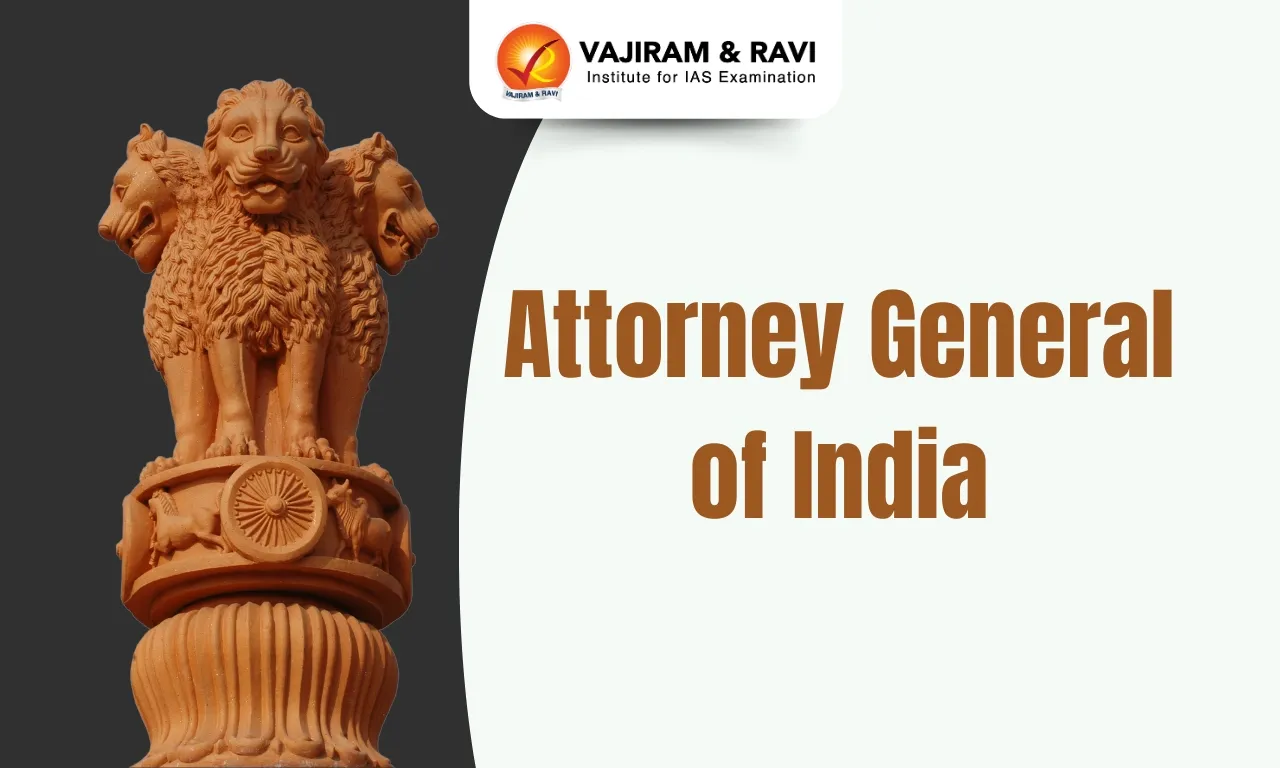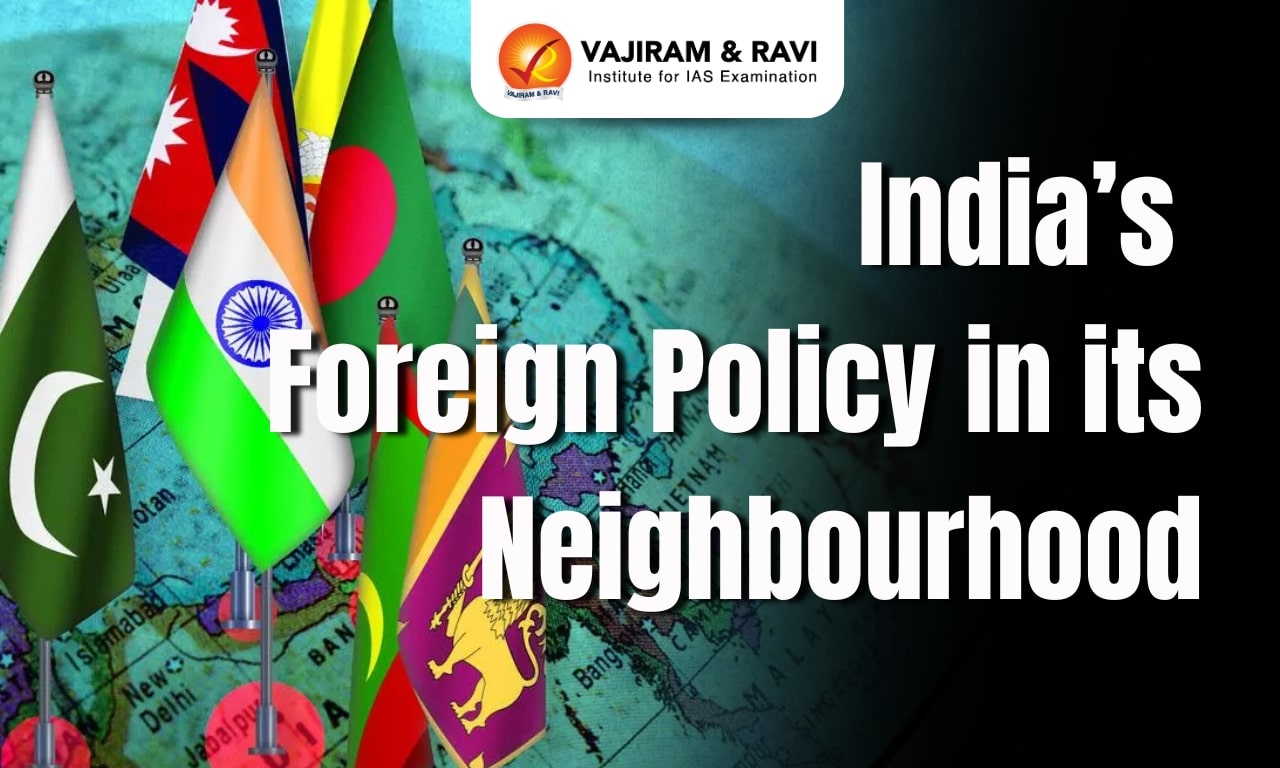The Parmara Dynasty was a Rajput kingdom that ruled the Malwa region of present-day central India. It belonged to the Agnikula or Agnivansha. According to the Agnikula myth, the founder of the Paramaras came from the firepit of sage Vasishtha on Mount Abu. Vishwamitra, the sage, is said to have stolen Vashishtha's kama dhenu (wish-granting cow). Vashishtha sacrificed his cow on Mount Abu to retrieve it. From this sacrifice fire, a hero who captured his cow and was given the name Paramara (slayer of enemies) emerged.
- Founder: It was founded in the early ninth century by Upendra (Krishanaraja). Siyaka II made it an independent kingdom. After defeating Rashtrakuta King Khotigga, Siyaka II succeeded the Rashtrakutas of Manykheta.
- Extent of rule: The Paramara dynasty ruled from the 10th century to the 14th century in central and western parts of India, with Dhar and Mandu as their capitals.
- They ruled Malwa and the surrounding areas of west-central India. They extended from Chittor in the north to Konkan in the south and from the Sabarmati River in the west to Vidisha in the east.
- The Paramaras' main spheres of influence were dispersed across the contemporary towns and cities of Ujjain, Dhar, Bhilsa, Bhojpur, Shergarh, Udaipur, Mandu, and Depalpur.
- Sources: The Harsola copper plates of Siyaka II mention a king called Akalavarsha. Additionally, Nava-sahasanka-charita mentions the story title ‘Paramar’.
Paramara Dynasty Important Rulers
The Paramara rulers were known for their military prowess and patronage of art, architecture, and literature. The following are some of the important rulers of the Paramara dynasty.
Upendra of Paramara Dynasty
Upendra is often considered the founding ruler of the Paramara Dynasty. Not much is known about his reign, but he is credited with establishing the Paramara rule in the Malwa region. Upendra was succeeded by rulers who expanded the dynasty's influence over the years.
Siyaka II of Paramara Dynasty
Siyaka II was a pivotal ruler who strengthened the Paramara power by taking advantage of the weakening Rashtrakuta Empire. In 972 CE, he attacked and sacked the Rashtrakuta capital of Manyakheta, marking the ascendancy of the Paramaras as a regional power.
Prithvi Vallabha / Munja of Paramara Dynasty
Munja is credited with defeating the Kalachuris, the Huns, the Guhilas, the Nadulas, and the Tailapa. He was defeated and killed by western Chalukyaking Tailapa II. He adopted the titles of Amoghavarsha, Prithvi Vallabha, and Sri Vallabha.
Sindhuraja of Paramara Dynasty
Sindhuraja, a brother of Munja, ruled from 990 to 1010 CE. He defeated Satyashraya of the Western Chalukyas, the Somavanshis of south Kosala, the Shilaharas of Konkana, and the ruler of Lata.
- Source: His biography “Nava-Sahasanka- Charita” is written by his court poet Padma Gupta.
- Literature: Literature during his period includes 'Dasharupaka' written by Dhanajaya, 'Yashorupa valika' by Dhanika and 'Tilak-manjari' by Dhanapala.
Bhoja of Paramara Dynasty
Bhoja is arguably the most famous ruler of the Paramara dynasty. His reign from 1010 CE to 1055 CE marked the zenith of Paramara's power and cultural achievements.
- Military conquests: He defeated the Chalukyas of Lata (present-day Gujarat), Shilahara of Konkan, and Chahamanas of Shakambhari. He increased his power among the Dubkund Kachchhapaghatas and the Chandela feudatories. He adopted the title of Parameshvara-Parama Bhattaraka.
- Sources: He has been described as “Kaviraj” in Udaypur Prashasti. Modasa copper plates are the earliest historical record of Bhoja's reign.
- Contribution to Architecture: He founded the city of Bhojpur, constructed the Bhojeshwar Temple, and builtthree dams in the area. He also founded the Bhoj Shala, a centre for Sanskrit studies in Dhar.
- Contribution to Literature: He was a great patron of art and literature and adorned many court poets. He authored the Sarasvati-Kanthabharana, a Sanskrit Grammar treatise. His other works include Bhujabala-Bhima, Charucharya, Shalihotra, and Shringara-Prakasha.
- Dasabala, the court poet of Bhoja composed Chintamani-Sarnika.
Naravarman of Paramara Dynasty
Naravarman's reign (1094-1133 CE) witnessed a significant decline in the power of the Paramara Dynasty. Dewas grant inscription mentions the succession of Naravarman after Udayaditya on the throne. He wrote the Nagpur Prashasti and restored the Ujjain Mahakala temple.
Mahalakadeva of Paramara Dynasty
Mahalakadeva was the last significant ruler of the Paramara Dynasty. His reign saw the dynasty's final collapse with the invasion of the Delhi Sultanate. In 1305, Mahalakadeva was defeated and killed by the forces of Alauddin Khilji, marking the end of the Paramara rule in Malwa.
Paramara Dynasty Administration
The Paramaras had a centralised system of administration, with the king holding the highest authority. The administrative framework was hierarchical, with ministers and officers responsible for various departments, such as revenue, justice, and military affairs.
- Administrative Division: The kingdom was divided into several provinces, each governed by a feudatory chief or a governor appointed by the king. Local self-governance at village levels was encouraged, and village councils played a vital role in managing resources and resolving disputes.
- Army: The Paramara military was composed of infantry, cavalry, and war elephants, typical of Indian armies of the time. The dynasty maintained a strong military to defend their kingdom from external threats. Fortifications were built in major cities like Ujjain, Dhara, Bhilsa, and Mandu.
Paramara Dynasty Decline
After Raja Bhoja's death, the Paramara dynasty began to decline. By the 13th century, it had lost much of its power and territory. Weak rulers, invasion from other dynasties and invasion of Alauddin Khilji resulted in the end of Paramara rule in Malwa.
- Weak rulers: Rulers after Bhoja were weak and could not manage the empire.
- Invasions: The Parmara Dynasty faced invasions from neighbours such as the Western Chalukyas, the Yadavas, the Deccan Sultanates, and the Vaghelas.
- Last Ruler: The last Paramara king, Mahalakadeva, was defeated and killed by the army of Ayn al-Mulk Multani (Governor of Alauddin Khilji) in 1305 CE.
Paramara Dynasty UPSC PYQs
Question 1: Consider the following pairs: (UPSC Prelims 2022)
King Dynasty
- Nannuka Chandela
- Jayashakti Paramara
- Nagabhata II Gurjara-Pratihara
- Bhoja Rashtrakuta
How many pairs given above are correctly matched?
(a) Only one pair
(b) Only two pairs
(c) Only three pairs
(d) All four pairs
Answer: (b)
Last updated on December, 2025
→ Check out the latest UPSC Syllabus 2026 here.
→ Join Vajiram & Ravi’s Interview Guidance Programme for expert help to crack your final UPSC stage.
→ UPSC Mains Result 2025 is now out.
→ UPSC Notification 2026 is scheduled to be released on January 14, 2026.
→ UPSC Calendar 2026 is released on 15th May, 2025.
→ The UPSC Vacancy 2025 were released 1129, out of which 979 were for UPSC CSE and remaining 150 are for UPSC IFoS.
→ UPSC Prelims 2026 will be conducted on 24th May, 2026 & UPSC Mains 2026 will be conducted on 21st August 2026.
→ The UPSC Selection Process is of 3 stages-Prelims, Mains and Interview.
→ UPSC Result 2024 is released with latest UPSC Marksheet 2024. Check Now!
→ UPSC Prelims Result 2025 is out now for the CSE held on 25 May 2025.
→ UPSC Toppers List 2024 is released now. Shakti Dubey is UPSC AIR 1 2024 Topper.
→ UPSC Prelims Question Paper 2025 and Unofficial Prelims Answer Key 2025 are available now.
→ UPSC Mains Question Paper 2025 is out for Essay, GS 1, 2, 3 & GS 4.
→ UPSC Mains Indian Language Question Paper 2025 is now out.
→ UPSC Mains Optional Question Paper 2025 is now out.
→ Also check Best IAS Coaching in Delhi
Paramara Dynasty FAQs
Q1. Who was the founder of the Paramara dynasty?+
Q2. Who was the most famous Paramara king?+
Q3. Which is the capital of Paramaras?+
Q4. What is the time period of Paramaras?+
Q5. Who was the last king of Paramara dynasty?+
Tags: paramara dynasty quest

















